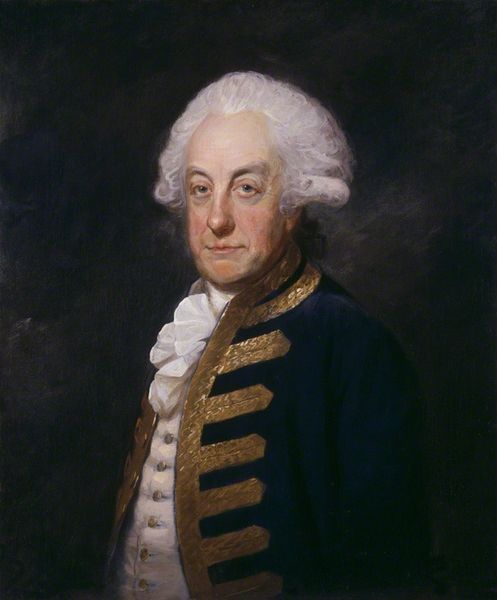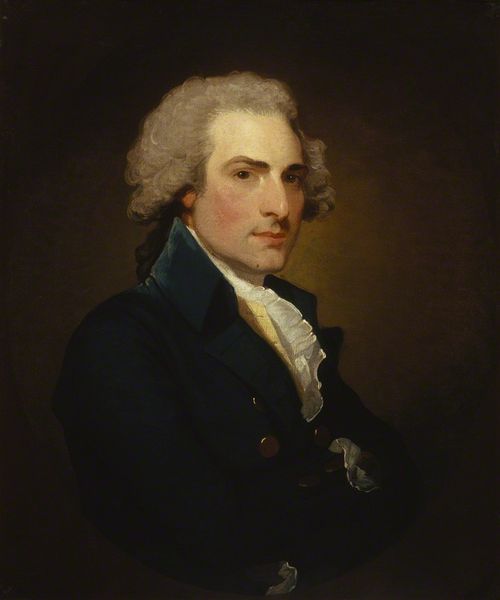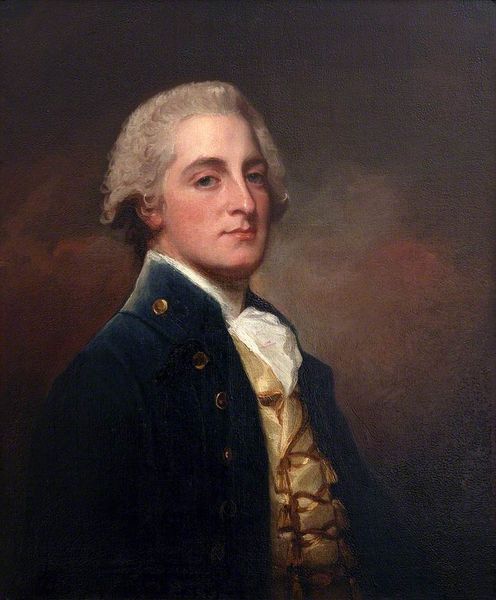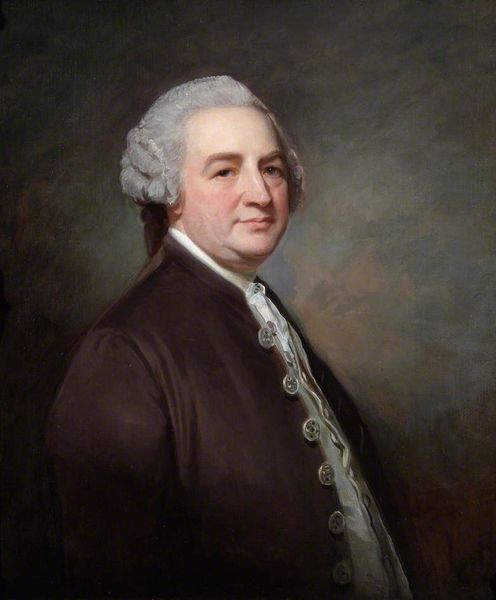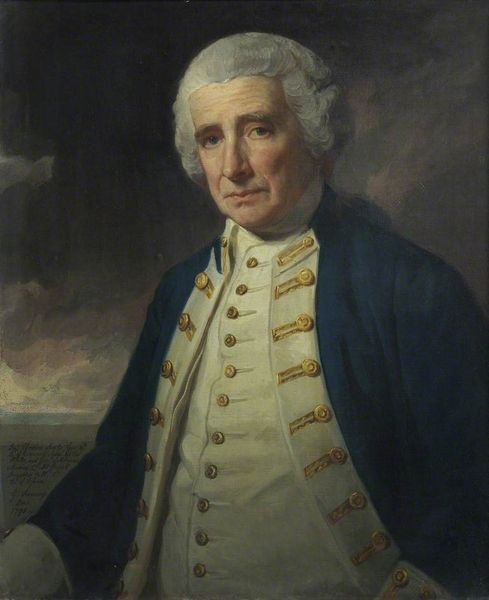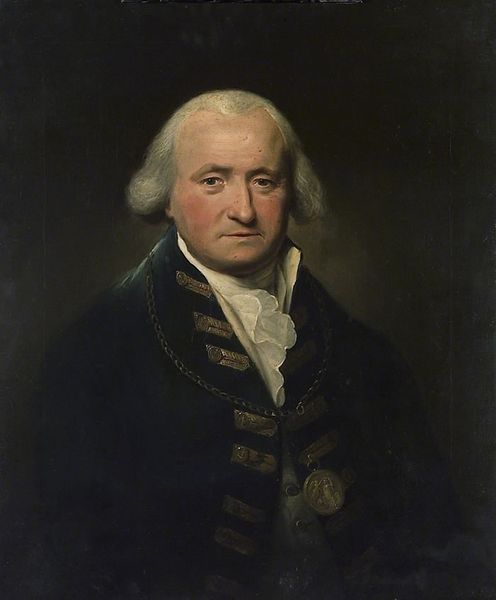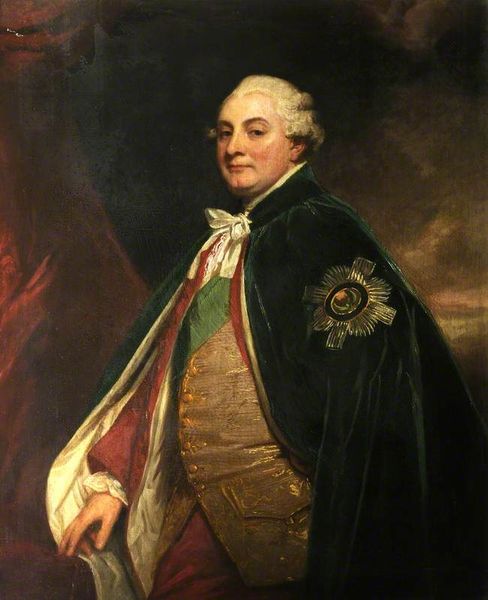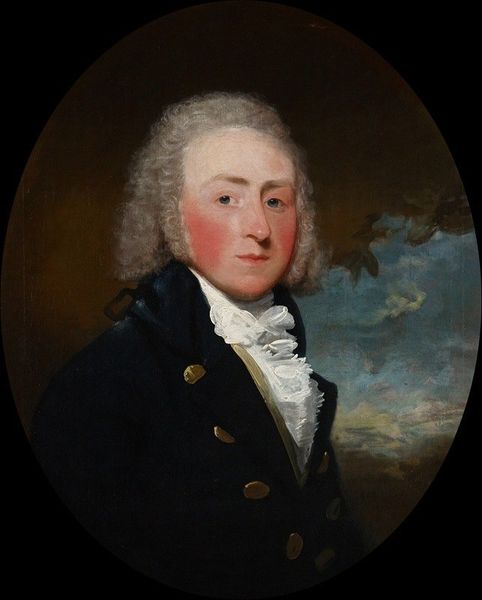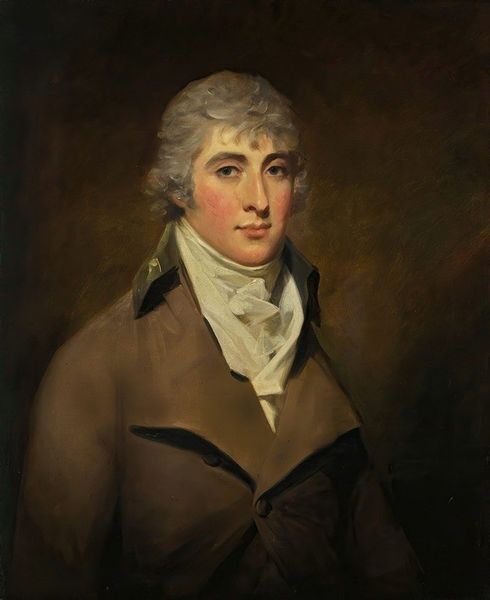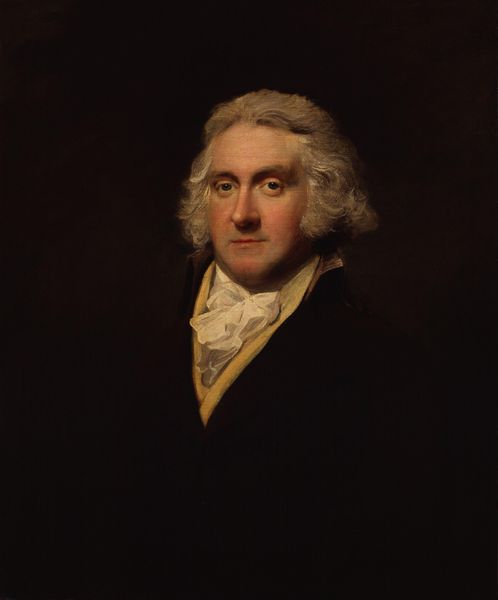
Copyright: Public domain
Curator: Good morning. We are standing before George Romney’s portrait of *Vice-Admiral Sir Joshua Rowley*, created in 1788, showcasing the sitter in his naval attire. Editor: My first impression is one of formality and slight unease. There's something stiff about his posture, amplified by the weight and opulence of that jacket. I'm struck by how the materiality of his coat-- the texture and gold ornamentation-- conveys so much about his social standing and profession. Curator: Indeed, Romney painted many portraits of British aristocracy during the late 18th century. Rowley was a distinguished naval officer, a Baronet even. This portrait solidified his status, visually representing his service to the crown and country. Portraits like these functioned as political tools and were commissioned by those trying to project power. Editor: Absolutely, the labor involved in producing that garment, the tailoring and gold work—it speaks volumes about a system built on maritime trade and the social structures it upheld. Looking closely, the buttons are repetitive and decorative; that highlights the economic processes and colonial expansion which afforded such luxuries and commissioned works. Curator: The choice of Romantic style, though fairly subdued here, speaks to a changing attitude. Rowley is portrayed not as a mere cog in the machine of empire but as an individual of some merit, perhaps to emphasize individual leadership qualities within the military structure. These artistic choices are strategic. Editor: I wonder about the production process of the painting itself— the grinding of pigments, layering of the oil paint, and Romney’s own social position as an artist within that economy. It highlights the collaborative nature of art creation and the conditions of making. Were apprentices involved? What materials were used? How did the commodification of art support not just the aristocracy, but an industry as well? Curator: All fascinating questions to consider. What's interesting to me is how the very act of creating and displaying this portrait reinforced specific social norms around status, power, and leadership, solidifying the place of naval heroes in the public eye. The work became a testament to his existence, and a justification for empire. Editor: Indeed, the social fabric of 18th-century England is so intricately woven into the canvas. This close examination, the layering of oil paints onto fabric by artist for patron, reveals some of the structures within which all were implicated. Thank you. Curator: Thank you.
Comments
No comments
Be the first to comment and join the conversation on the ultimate creative platform.
